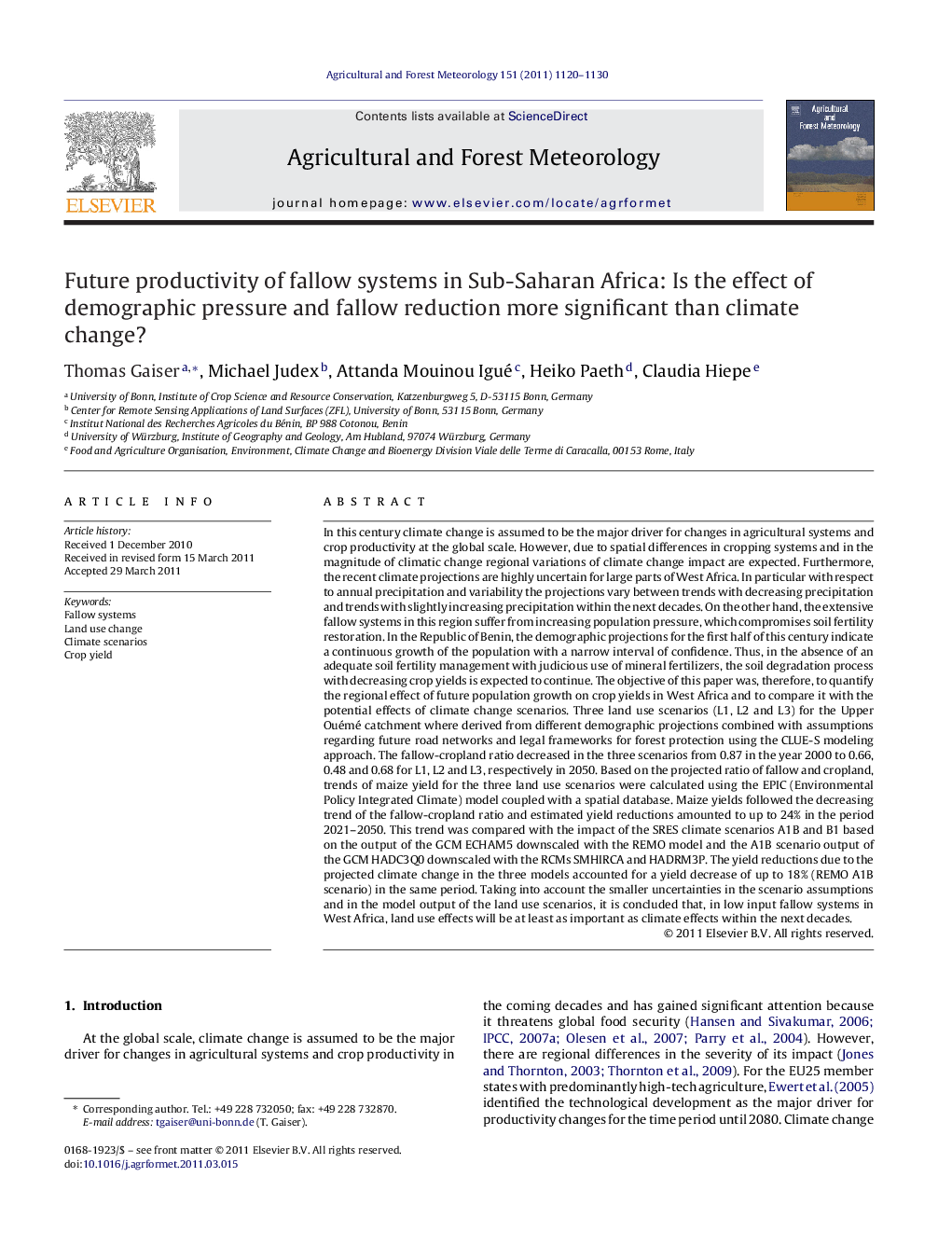| Article ID | Journal | Published Year | Pages | File Type |
|---|---|---|---|---|
| 82124 | Agricultural and Forest Meteorology | 2011 | 11 Pages |
In this century climate change is assumed to be the major driver for changes in agricultural systems and crop productivity at the global scale. However, due to spatial differences in cropping systems and in the magnitude of climatic change regional variations of climate change impact are expected. Furthermore, the recent climate projections are highly uncertain for large parts of West Africa. In particular with respect to annual precipitation and variability the projections vary between trends with decreasing precipitation and trends with slightly increasing precipitation within the next decades. On the other hand, the extensive fallow systems in this region suffer from increasing population pressure, which compromises soil fertility restoration. In the Republic of Benin, the demographic projections for the first half of this century indicate a continuous growth of the population with a narrow interval of confidence. Thus, in the absence of an adequate soil fertility management with judicious use of mineral fertilizers, the soil degradation process with decreasing crop yields is expected to continue. The objective of this paper was, therefore, to quantify the regional effect of future population growth on crop yields in West Africa and to compare it with the potential effects of climate change scenarios. Three land use scenarios (L1, L2 and L3) for the Upper Ouémé catchment where derived from different demographic projections combined with assumptions regarding future road networks and legal frameworks for forest protection using the CLUE-S modeling approach. The fallow-cropland ratio decreased in the three scenarios from 0.87 in the year 2000 to 0.66, 0.48 and 0.68 for L1, L2 and L3, respectively in 2050. Based on the projected ratio of fallow and cropland, trends of maize yield for the three land use scenarios were calculated using the EPIC (Environmental Policy Integrated Climate) model coupled with a spatial database. Maize yields followed the decreasing trend of the fallow-cropland ratio and estimated yield reductions amounted to up to 24% in the period 2021–2050. This trend was compared with the impact of the SRES climate scenarios A1B and B1 based on the output of the GCM ECHAM5 downscaled with the REMO model and the A1B scenario output of the GCM HADC3Q0 downscaled with the RCMs SMHIRCA and HADRM3P. The yield reductions due to the projected climate change in the three models accounted for a yield decrease of up to 18% (REMO A1B scenario) in the same period. Taking into account the smaller uncertainties in the scenario assumptions and in the model output of the land use scenarios, it is concluded that, in low input fallow systems in West Africa, land use effects will be at least as important as climate effects within the next decades.
► Future demographic pressure in West Africa humid savanna reduces fallow availability and crop yield. ► Quantification of impact of fallow availability on crop yields in low-input fallow systems at the regional scale. ► For crop productivity in fallow systems future land use changes are as important as climate change in the coming decades.
